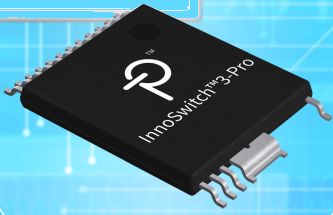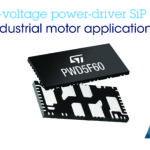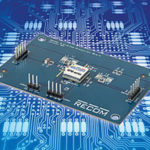Four finalists were announced Friday for the inaugural LEAP Awards’ Power Electronics Category, comprising a broad array of new advances in power semiconductor and power management technology. The competition was scored by a panel of independent technical/engineering judges.
This year’s inaugural LEAP Awards competition honored ground-breaking new products that set a new standard for innovation. Judges rated candidates on categories that included societal impact, industry impact, technical sophistication, creativity, and value to customers.
Four judges chose the winners of the power electronics category: Bonnie Baker of ATW, Plamen Doynov of the University of Missouri-Kansas City, Robert Kollman of Kollman Power Engineering, and Bill Schweber of Jaffa Engineering.
Bonnie Baker has authored six books on analog and digital systems began her career as a manufacturing product engineer at Burr-Brown. Baker holds an MS EE from the University of Arizona and has also authored more than 500 technical publications and is a frequent presenter at technical conferences and shows.
Plamen Doynov is a research professor in physics and has worked in industry as a biomedical engineer and in research and development of specialized scientific systems, including as VP of Electrical Engineering at Aviation Simulation. His PhD in Electrical Engineering and Computer Sciences is from the University of Missouri-Kansas City. His MS EE is from The Catholic University of America.
Robert Kollman is a power electronics designer and researcher with more than 45 years of experience, mostly with Texas Instruments. There, he led the development of high-volume power supplies for commercial production at TI’s strategic customers. Kollman is a prolific author, with more than 150 published contributed articles.
Bill Schweber has written three textbooks on electronic communications systems, as well as hundreds of technical articles, opinion columns, and product features. He has also edited the respected technical journal published by Analog Devices Inc. He has also worked at Instron Corp. doing analog- and power-circuit design and systems integration for materials-testing machine controls. His MSEE is from the University of Massachusetts and his BSEE from Columbia University.
Judges chose four finalists. The overall winner of the power electronics category will be announced at an awards dinner on December 11, 2018 in Costa Mesa, Calif.
The finalists, in no particular order, are CUI with its high-performance Peltier modules incorporating an arcTEC structure; Mentor, a Siemens Co, with its MicReD power tester; Maxim Integrated for its uSLIC power modules; and Power Integrations with its InnoSwitch3-Pro IC family.
The CUI arcTEC structure utilizes a combination of thermally conductive resin  between the ceramic and copper on the cold side of the Peltier module, high temperature solder, and larger P/N elements made from premium silicon ingot. The elasticity of arcTEC’s resin layer allows for thermal expansion and contraction during the repeated heating and cooling of normal operation, which reduces stress on the elements, resulting in a better thermal connection, superior mechanical bond, and no marked drop-off in performance over time. High temperature solder and larger silicon elements are incorporated to enable faster and more uniform cooling. Ranging in size from 20 to 50 mm with profiles as low as 3.15 mm, these Peltier modules are available with a ΔTmax up to 95°C (Th=50°C) and current ratings from 2.0 to 12.5 A.
between the ceramic and copper on the cold side of the Peltier module, high temperature solder, and larger P/N elements made from premium silicon ingot. The elasticity of arcTEC’s resin layer allows for thermal expansion and contraction during the repeated heating and cooling of normal operation, which reduces stress on the elements, resulting in a better thermal connection, superior mechanical bond, and no marked drop-off in performance over time. High temperature solder and larger silicon elements are incorporated to enable faster and more uniform cooling. Ranging in size from 20 to 50 mm with profiles as low as 3.15 mm, these Peltier modules are available with a ΔTmax up to 95°C (Th=50°C) and current ratings from 2.0 to 12.5 A.
The MicReD Power Tester 600A product from Mentor, a Siemens business, tests  electric and hybrid vehicle (EV/HEV) power electronics reliability during power cycling. It lets EV/HEV development and reliability engineers test power electronics (such as insulated gate bipolar transistors – IGBTs, MOSFETs, transistors, and chargers) for mission-critical thermal reliability and lifecycle performance. It includes an easy setup and fully-automated reliability testing for lifecycle estimation. All diagnostic information is recorded during testing, from current, voltage and die temperature sensing, to “structure function” changes that point to reasons for failures in the package structure. IGBT modules can be power-tested through tens of thousands of cycles for “real-time” failure-in-progress data for diagnostics, significantly reducing test time and eliminating postmortem or destructive failure analysis.
electric and hybrid vehicle (EV/HEV) power electronics reliability during power cycling. It lets EV/HEV development and reliability engineers test power electronics (such as insulated gate bipolar transistors – IGBTs, MOSFETs, transistors, and chargers) for mission-critical thermal reliability and lifecycle performance. It includes an easy setup and fully-automated reliability testing for lifecycle estimation. All diagnostic information is recorded during testing, from current, voltage and die temperature sensing, to “structure function” changes that point to reasons for failures in the package structure. IGBT modules can be power-tested through tens of thousands of cycles for “real-time” failure-in-progress data for diagnostics, significantly reducing test time and eliminating postmortem or destructive failure analysis.
The micro system-level IC (uSLIC) modules from Maxim Integrated Products,  Inc. — MAXM17532 and MAXM15462 ultrasmall — are integrated dc-dc power modules give the benefits of industry-best switching regulators with the size and simplicity of a linear regulator (LDO). The uSLIC power modules shrink the size of the power supply by 2.25x with an ultra-small package size. The size reduction comes from integrating a synchronous wide-input buck regulator with built-in FETs, compensation, and other functions with an integrated inductor. The modules fit into almost the same space as a tiny LDO. The uSLIC dc-dc buck regulator modules operate with inputs as low as 4 V and as high as 42 V, and they support multiple applications across nominal input voltages of 5 V, 12 V, 24 V, and 36 V with reliable headroom.
Inc. — MAXM17532 and MAXM15462 ultrasmall — are integrated dc-dc power modules give the benefits of industry-best switching regulators with the size and simplicity of a linear regulator (LDO). The uSLIC power modules shrink the size of the power supply by 2.25x with an ultra-small package size. The size reduction comes from integrating a synchronous wide-input buck regulator with built-in FETs, compensation, and other functions with an integrated inductor. The modules fit into almost the same space as a tiny LDO. The uSLIC dc-dc buck regulator modules operate with inputs as low as 4 V and as high as 42 V, and they support multiple applications across nominal input voltages of 5 V, 12 V, 24 V, and 36 V with reliable headroom.
The InnoSwitch3-Pro series family of ICs from Power Integrations dramatically  simplifies the development and manufacturing of fully programmable, highly efficient power supplies, particularly those in compact enclosures. The universal I2C interface enables dynamic control of output voltage and current along with many configurable features. Telemetry provides reporting of programmed features and fault modes. Among the applications are ac/dc power supplies up to 65 W where fine (10 mV, 50 mA) output voltage and current adjustment are necessary.
simplifies the development and manufacturing of fully programmable, highly efficient power supplies, particularly those in compact enclosures. The universal I2C interface enables dynamic control of output voltage and current along with many configurable features. Telemetry provides reporting of programmed features and fault modes. Among the applications are ac/dc power supplies up to 65 W where fine (10 mV, 50 mA) output voltage and current adjustment are necessary.
The InnoSwitch3-Pro power-conversion ICs include a microprocessor VCC supply – eliminating the need for an external LDO for power; also included is an n-channel FET driver which may be used to enable or disable the main power output. The ICs employ Power Integrations’ high-speed digital communications technology, FluxLink, plus synchronous rectification, quasi-resonant switching and a precise secondary-side feedback sensing and feedback control circuit.






Leave a Reply